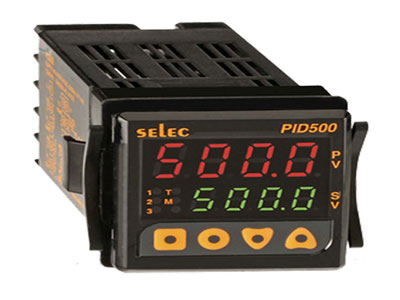What Formula Is Used For PID?
Key Takeaway
The formula for PID control is the sum of three terms: Proportional (P), Integral (I), and Derivative (D). The PID formula is:
C=Kp×e(t)+Ki×∫0te(τ) dτ+Kd×de(t)dttext{C} = Kp times text{e}(t) + Ki times int_0^t text{e}(tau) , dtau + Kd times frac{dtext{e}(t)}{dt}C=Kp×e(t)+Ki×∫0te(τ)dτ+Kd×dtde(t)
Here, KpKpKp is the proportional gain, KiKiKi is the integral gain, and KdKdKd is the derivative gain. e(t)text{e}(t)e(t) represents the error at time ttt, which is the difference between the set point (SV) and the process variable (PV).
The Proportional term (Kp×e(t))(Kp times text{e}(t))(Kp×e(t)) responds to the current error. The Integral term (Ki×∫0te(τ) dτ)(Ki times int_0^t text{e}(tau) , dtau)(Ki×∫0te(τ)dτ) addresses the accumulation of past errors. The Derivative term (Kd×de(t)dt)(Kd times frac{dtext{e}(t)}{dt})(Kd×dtde(t)) predicts future errors based on the rate of change.
Basic Formulas for PID Control
Understanding the PID (Proportional-Integral-Derivative) control formula is essential for anyone involved in process control and automation. PID controllers are used to maintain the desired output of a system by minimizing the error between the set point and the process variable. This article will explain the basic formulas and calculations that form the backbone of PID control, helping new engineers grasp these critical concepts.
The PID controller’s output is calculated using the following formula:
u(t)=Kp⋅e(t)+Ki⋅∫e(t) dt+Kd⋅ddte(t)u(t) = K_p cdot e(t) + K_i cdot int e(t) , dt + K_d cdot frac{d}{dt} e(t)u(t)=Kp⋅e(t)+Ki⋅∫e(t)dt+Kd⋅dtde(t)
In this formula, u(t)u(t)u(t) is the control output, e(t)e(t)e(t) is the error (the difference between the set point and the process variable), KpK_pKp is the proportional gain, KiK_iKi is the integral gain, and KdK_dKd is the derivative gain. Each term in the PID formula addresses different aspects of the error, ensuring precise control. The combination of these terms helps maintain the process variable at the desired set point.

Proportional Term Calculation
The proportional term (P)(P)(P) is calculated as follows:
P=Kp⋅e(t)P = K_p cdot e(t)P=Kp⋅e(t)
This term produces an output that is directly proportional to the current error value. A larger error results in a larger correction. For example, if the set point is 100°C and the process variable is 90°C, resulting in an error of 10°C, and KpK_pKp is set to 2, then the proportional output will be:
2⋅10=202 cdot 10 = 202⋅10=20
The proportional control helps bring the process variable closer to the set point quickly. However, it can result in a steady-state error where the process variable stabilizes slightly off the set point. This is because the proportional term alone does not account for the accumulated error over time.
Integral Term Calculation
The integral term (I)(I)(I) is calculated as follows:
I=Ki⋅∫e(t) dtI = K_i cdot int e(t) , dtI=Ki⋅∫e(t)dt
This term considers the accumulation of past errors. It integrates the error over time, addressing any residual offset that proportional control alone cannot correct. For instance, if KiK_iKi is 0.5 and the accumulated error over 10 seconds is 50°C·s, the integral output will be:
0.5⋅50=250.5 cdot 50 = 250.5⋅50=25
The integral control eliminates the steady-state error by continuously adjusting the controller output until the error is minimized. However, excessive integral action can lead to a slower response and potential overshoot. Proper tuning is essential to balance the system’s responsiveness and stability.
Derivative Term Calculation
The derivative term (D)(D)(D) is calculated as follows:
D=Kd⋅ddte(t)D = K_d cdot frac{d}{dt} e(t)D=Kd⋅dtde(t)
This term predicts future errors based on the rate of change of the error. It provides a damping effect that reduces overshoot and system oscillations. For example, if KdK_dKd is 1 and the rate of change of error is 2°C/s, the derivative output will be:
1⋅2=21 cdot 2 = 21⋅2=2
The derivative control helps stabilize the system by reacting to the speed at which the error is changing. However, it can be sensitive to noise, which can lead to erratic control actions if not filtered properly. This term is particularly useful in systems where rapid changes in the process variable are expected.
Combining the PID Components
The combined effect of these three terms results in a smooth and accurate control response. By summing the proportional, integral, and derivative terms, the PID controller calculates the final control output:
u(t)=P+I+D=Kp⋅e(t)+Ki⋅∫e(t) dt+Kd⋅ddte(t)u(t) = P + I + D = K_p cdot e(t) + K_i cdot int e(t) , dt + K_d cdot frac{d}{dt} e(t)u(t)=P+I+D=Kp⋅e(t)+Ki⋅∫e(t)dt+Kd⋅dtde(t)
This combined output is then used to adjust the control elements, such as heaters or coolers, to bring the process variable closer to the set point. Properly tuning these parameters is essential for achieving optimal performance in a PID-controlled system. For instance, in a temperature control system, fine-tuning KpK_pKp, KiK_iKi, and KdK_dKd ensures the temperature remains stable and accurate, preventing deviations that could affect product quality or process efficiency.
Conclusion
Applying PID formulas effectively is crucial for precise control in various industrial processes. By understanding and calculating the proportional, integral, and derivative components, engineers can design PID controllers that ensure stable and accurate system performance. Accurate PID control improves product quality, enhances process efficiency, and ensures safety. Mastering these formulas and tuning the PID parameters appropriately helps maintain optimal conditions, making PID control a vital tool in modern automation and control systems.
Understanding the PID control formula and its components is essential for achieving precise and stable control in industrial processes. By mastering these concepts, new engineers can ensure that their systems operate efficiently and meet the required standards.

